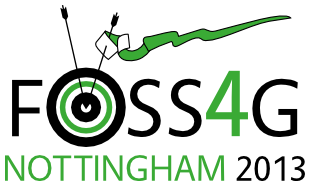Presentation
Linear Referencing And Dynamic Segmentation For Modelling (linear) Assets: An Application For A Road Network.
Andrés Maneiro (iCarto)
15:00 on Thursday 19th September (in Session 17, starting at 2:30 p.m., Sir Clive Granger Building: A41)
Show in Timetable
This session will look into how advanced data modeling methods -linear referencing and dynamic segmentation- can be useful in working with assets such as roads, water and sanitation networks, rivers or electrical grids. We will also showcase a custom solution based on PostGIS and gvSIG for road networks -built upon the methods mentioned- which is used in a european regional administration, located in Lugo, Galicia, northwest of Spain. In making an inventory of assets, we may have some basic entities -for example: a road- over the which we need to store more information -attributes or features- as its width, type of surface, elevation, traffic accidents, etc. In such a case, different approaches may be used to model this kind of data. For example: storing all the necessary attributes (width, surface, etc) in the same entity and split it at a constant rate -for instance: every few meters- or at a variable one -every time any of its features changes. Other solution might be to create several entities, one for each feature or event of the road, and update them separately. Last, but not the least, we can also consider using linear referencing and dynamic segmentation, which allow us to store every feature as a separate entity while having only one reference geometry (the road) over the wich all the attributes are referenced. Each method above can be useful in different situations: for example, when gathering information with mechanical means -such as a car- it is very common to receive the data at segments of the same length. But also some techniques are not recommended in some contexts on account of the problems they may cause: data fragmentation due to excesive segmentation (an important source of performance degradation and storage wasting), making the updating tasks harder for technicians since each one of the entities should change when the basic entity is modified, etc. The second part of the session will walk through a specific solution built on linear referencing and dynamic segmentation techniques, which helped us to design a system where each feature changed at different rate -avoiding the fragmentation phenomenon- while allowing for easy growth and extensibility of the data model and making the updating tasks easier for users. The application is a custom product for road management used in the conservation department of a regional european administration (located in Lugo, Galicia, northwest of Spain) built on top of PostGIS LRS functions and gvSIG as the UI tool to interact with the data. We will showcase how an user can view and update the data through the features catalog; how a technician can change the basic entity (the road) and that automatically will force the features and events affected to update; and other real use cases for this application and the opportunities that these techniques open. - About the speaker Andrés is a lead software architect and partner at iCarto, a company specialized in building custom solutions in areas such as civil engineering, development aid and cultural heritage. During last 5 years he has built products based on PostgreSQL, PostGIS, gvSIG, Geoserver, Openlayers, Python Pyramid or Backbone and he is fluent in languages such as Java, Javascript, Python, SQL and HTML5/CSS3.
